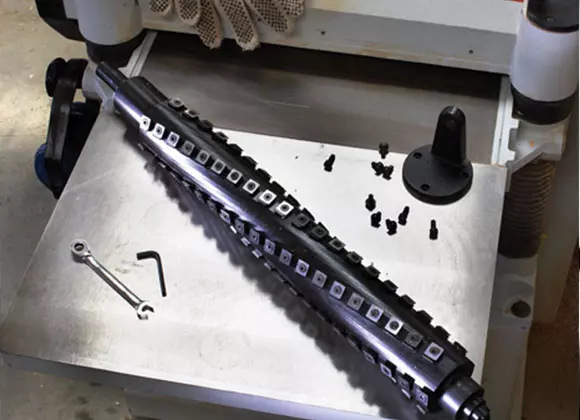
4 advantages make Carbide replacement inserts outstanding
From welded inserts to indexable inserts
From 1949 to 1950, the United States first developed an indexable turning tool that uses mechanical clamping, and in 1954 began selling throw-away indexable inserts. In the cutting process, when one cutting edge is blunt, you can turn to another cutting edge for replacement. This blade does not need to be re-grinded after being blunt. China once called this kind of tool a “non-regrinding tool”.

4 advantages of Carbide replacement inserts
Compared with the welded and clamped tools, replacement inserts have the following advantages:
① Avoid the shortcomings of cracks that easily occurs in brazing carbide;
② Carbide replacement inserts are suitable for hard deposition by vapor deposition a thin layer of harder materials (titanium carbide, titanium nitride, and aluminum oxide) deposited on the surface of the carbide blade to improve cutting performance;
③ The tool change time is shorter;
④ Since the replacement insert is standardized and concentrated, the blade geometry parameters are easy to be consistent and stable chip control.

The usage of carbide indexable inserts
The application range of indexable tools is very wide, including various turning tools, boring tools, milling tools, external surface broaches, large-diameter deep hole drills, and sleeve drills. The inserts of most indexable tools are made of cemented carbide, and some are made of ceramic, polycrystalline cubic boron nitride, or polycrystalline diamond.
The newly developed carbide replacement inserts have 4 complete cutting edges, which can ensure that the cutting process is carried through to the end. There will not be any uneven wear caused by excessive exposure of a corner to further lead to the entire blade’s premature wearing and scraping. The progressive technology ensures that all corners are covered during the entire cutting process.

Types of carbide inserts
Commonly used indexable insert shapes are regular in the shape of trigonal, quadrilateral, pentagonal, circular, and rhombic. The inscribed circle diameter of the blade profile is the basic parameter of the blade, and its size (mm) series are 5.56, 6.35, 9.52, 12.70, 15.88, 19.05, 25.4…. Commonly used blade tolerance grades include precision grade (G), medium grade (M), and ordinary grade (U), which can be selected as required.
Blades of various shapes have holes with or without holes in the center; those with no clearance angles or with different clearance angles; those with no chip breakers, and one or both sides with chip breakers.
In order to meet the needs of chip breaking under various usage conditions, the chip breaking groove of the blade is also made into various forms. The chip breaker of indexable inserts is usually sintered after pressing cemented carbide, and the through-type chip breaker can also be ground on the sintered blades.
Multi-stage and concave arc-shaped chip breakers and point-type chip breakers have a larger chip breaking range than single-stage slots (ie, the cutting speed, depth of cut, and larger feed amount range ).